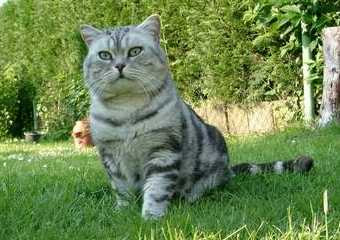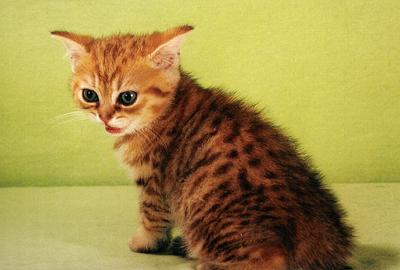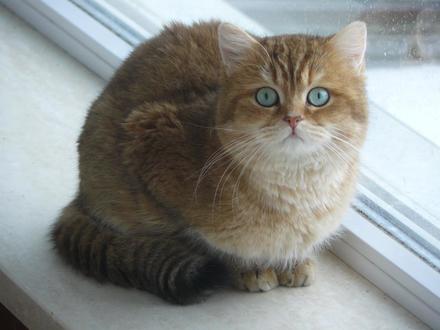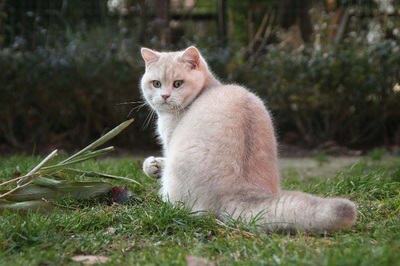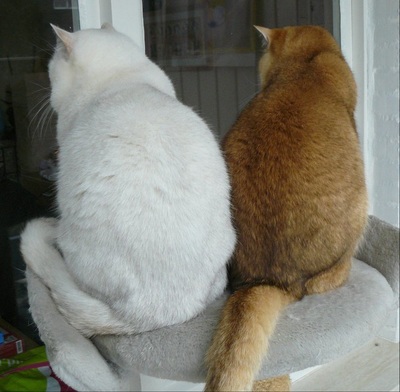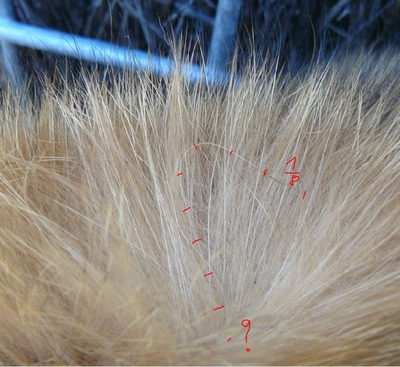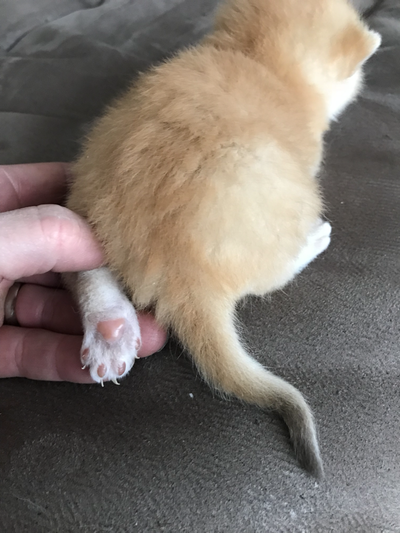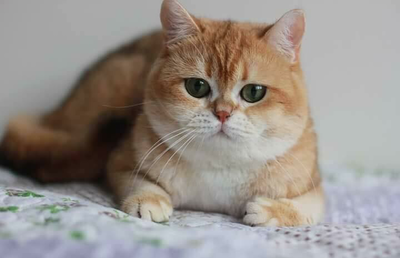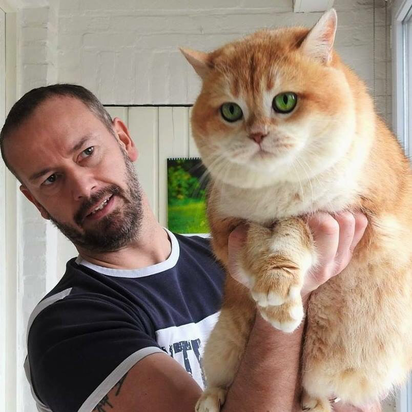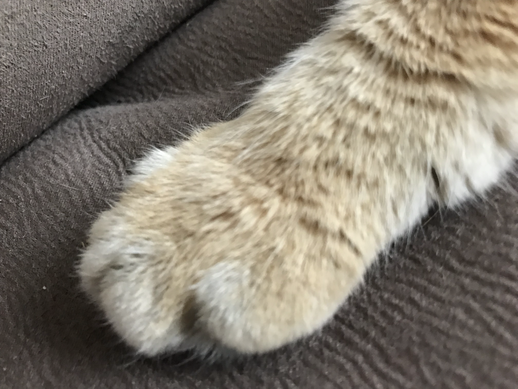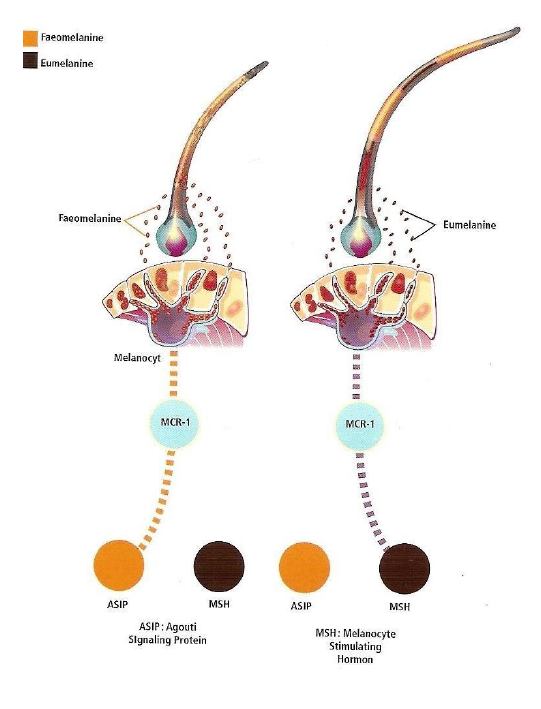- Home
- about us
- cattery history
- genetics
- females
-
kittens
- k1-litter
- j1-litter
- i1-litter
- h1-litter
- g1-litter
- f1-litter
- e1-litter
- d1-litter
- c1-litter
- b1-litter
- a1-litter
- z-litter
- y-litter
- x-litter
- w-litter
- v-litter
- u-litter
- t-litter
- s-litter
- r-litter
- q-litter
- p-litter
- o-litter
- n-litter
- m-litter
- L-litter
- k-litter
- j-litter
- i-litter
- h-litter
- g-litter
- f-litter
- e-litter
- d-litter
- c-litter
- b-litter
- a-litter
- type
- available
- castrates
- longhair kittens
- Nelson
- contact
- links
History
The silver and golden Persian
The earliest documentation of silvers shows “Chinnie,” born in 1882 in England. While no pictures of her have been found, there was one of her famous grandson, “Silver Lambkin.” Some of the pedigrees of our present day silvers have been traced back to Lambkin. There was little record keeping in the early days, but as time went on people paid more attention to documenting their breeding. These records showed that other colors, often blues and tabbies, were used in the breeding of silvers. Silvers also appeared in the pedigrees of Persians of other colors. There is no record to show when silvers were accepted by the Cat Fanciers’ Association, so it is reasonable to assume they were among the original colors bred when this association was organized in 1906. Silvers had been imported into the United States from England before that date.
The Golden Persian does not have as long a history in CFA as does the Silver Persian. The golden color is recessive to silver, and for many years before this color was accepted, “odd colored” kittens occasionally popped up in “colorbred” silver litters. Most often these kittens, then referred to as “brownies,” were placed as pets. By the 1960's a few interested breeders were working with them. The beauty of their golden coats with the contrast of their vivid green or blue-green eyes attracted more and more dedicated breeders, and gradually they grew in popularity until they were finally accepted by CFA in 1976.
Source: (http://www.cfa.org/Breeds/BreedsKthruR/Persian/PERSLVArticle(2001).aspx)
The Golden Persian does not have as long a history in CFA as does the Silver Persian. The golden color is recessive to silver, and for many years before this color was accepted, “odd colored” kittens occasionally popped up in “colorbred” silver litters. Most often these kittens, then referred to as “brownies,” were placed as pets. By the 1960's a few interested breeders were working with them. The beauty of their golden coats with the contrast of their vivid green or blue-green eyes attracted more and more dedicated breeders, and gradually they grew in popularity until they were finally accepted by CFA in 1976.
Source: (http://www.cfa.org/Breeds/BreedsKthruR/Persian/PERSLVArticle(2001).aspx)
The first golden british shorthairs (on main land)
Mrs. Wellmeyer a German breeder with the “Marvellous” prefix fell in love with a silvertabby face in 1978.
Mrs Wellmeyer started with a small English female. As there were only some silvertabbies in Germany she contacted Ad de Bruijn in Netherland, breeder of "de Broeckloni". She got two silvertabbies (male and female) of his very important breed. In the middle of the 80's, in order to have new blood and prevent inbreeding she used three Persian cats and one Exotic, most of them shaded-silver, one a very light LH-tabby. So she got better bodies and type, but light color and longer hairs. To improve the color and coat she used the orange-eyed blue-silver-tabby "Boy de Broeckloni", which had browntabby and blue ancestors. On the way to better silvertabbies she suddenly got golden-tabbies, as the Persian-shadeds were carrying this colour.
There wasn't a standard for this new variety at that time.
Mrs. Wellmeyer started the long way to acknowledgement, not in her club (independent) but FIFe. So only some breeders started in the ‘80s with this new color. At shows judges told her to expose the golden-tabbies as green-eyed pets. So she bred goldens without pattern. The shaded-goldens found many friends and breeders because silver-shaded-breeders saw the chance to use new blood.
Mrs Wellmeyer started with a small English female. As there were only some silvertabbies in Germany she contacted Ad de Bruijn in Netherland, breeder of "de Broeckloni". She got two silvertabbies (male and female) of his very important breed. In the middle of the 80's, in order to have new blood and prevent inbreeding she used three Persian cats and one Exotic, most of them shaded-silver, one a very light LH-tabby. So she got better bodies and type, but light color and longer hairs. To improve the color and coat she used the orange-eyed blue-silver-tabby "Boy de Broeckloni", which had browntabby and blue ancestors. On the way to better silvertabbies she suddenly got golden-tabbies, as the Persian-shadeds were carrying this colour.
There wasn't a standard for this new variety at that time.
Mrs. Wellmeyer started the long way to acknowledgement, not in her club (independent) but FIFe. So only some breeders started in the ‘80s with this new color. At shows judges told her to expose the golden-tabbies as green-eyed pets. So she bred goldens without pattern. The shaded-goldens found many friends and breeders because silver-shaded-breeders saw the chance to use new blood.
Because she was a great fan of tabbies she started breeding golden-tabbies too. It was a big business for many years to couple silvertabbies to golden-shadeds, keeping the cats carrying the golden color and the blotched pattern. She did it doubly to get two lines of golden-tabbies to prevent inbreeding. She kept many cats from only one litter, mating one, and taking their kittens for the next generation.
By selection she got nice golden-tabbies, and also blue-goldens. And mated the goldens to the silvertabbies to import new blood for this variety. And more: The golden-shadeds came from Persian cats and brought good bodies, very intensive green eyes and a lovely character into the tabbies.
http://www.marvellous-cats.de
By selection she got nice golden-tabbies, and also blue-goldens. And mated the goldens to the silvertabbies to import new blood for this variety. And more: The golden-shadeds came from Persian cats and brought good bodies, very intensive green eyes and a lovely character into the tabbies.
http://www.marvellous-cats.de
Genetics (my opinions)
What is a tabbie?
The tabby cat is produced by the action of two separate genes, the Agouti gene combined with the allele for pattern. The Agouti gene (A) (what can be read as wild colored cat). We see banding or ticking on the hairs. In the self or non-agouti (aa) (what can be read as all solid colored cats) the hair is the same color from skin to tip, but in the agouti cat (Aa or AA) the hair shows distinct bands of two colors. As a consequence of the presence of the pattern gene the agouti gene does not affect all parts of the coat equally, but gives an uneven, though regular, pattern of solid areas of coat devoid of ticking or banding. It is important that the solid areas of color forming the pattern must show no sign of agouti hairs, or agouti invasion. The area between the pattern consists of agouti hairs, and is usually referred to as ‘ground color’. The three distinct, "recognizable", Tabby patterns in the British Shorthair are Ticked (Ta), Spotted (T), Classic (tb). It must be remembered that all cats, non-agouti and agouti, have patterns, but these only become clearly visible in the agouti cats. The ‘ghost markings’ of self (solid color) cats, especially the lighter colors, clearly indicate their pattern.
What is a shaded (tipped)?
A Shaded, either Silver or golden is in essence a modified Tabby where the colour is restricted to the upper portion of the hair, anything from half the hair to just a tiny tip. The genes responsible for this I like to call ‘Wide-band’ (Wb) genes. The effect of the genes is that it greatly increases the width of the bands of ticking on the hairs; it distorts and effectively breaks down the tabby pattern so that it becomes indistinct, and at best invisible.
The Wide-band gene (hypothetical) was, along with Silver (Inhibitor), introduced into the forerunners of our modern day British by the foundation SILVER cats. Wide Banding is something that you can select for and must be present in every cat in some degree. (For example the different shades of blue in blue solid cats.)
The effect of the allele appears to be somewhat variable, but this may well be the result of associated polygenes, and perhaps selection for these ‘enhancers’ is of greater importance in the breeding of the Shaded (tipped) cat than in any other variety. Because the gene is incompletely dominant the heterozygous will not look like the homozygous, and is visually intermediate between the Tabby and the Shaded, and may well be mistaken for a Tabby, though in reality it is a Shaded.
The Wide-band gene greatly affects the balance between dark and light banding, producing a far higher proportion of light banding. The genotype/phenotype of the three basic combinations of the agouti and wide-band genes are in the case of the goldens
The effect of the allele appears to be somewhat variable, but this may well be the result of associated polygenes, and perhaps selection for these ‘enhancers’ is of greater importance in the breeding of the Shaded (tipped) cat than in any other variety. Because the gene is incompletely dominant the heterozygous will not look like the homozygous, and is visually intermediate between the Tabby and the Shaded, and may well be mistaken for a Tabby, though in reality it is a Shaded.
The Wide-band gene greatly affects the balance between dark and light banding, producing a far higher proportion of light banding. The genotype/phenotype of the three basic combinations of the agouti and wide-band genes are in the case of the goldens
A_wbwb
Dark Tabby of some pattern (including ticked tabby)
A_Wbwb
Shaded showing both agouti hairs and visible pattern (including ticked tabby) dark greyish golden
A_WbWb
Shaded (patterns partly faded away including ticked tabby) very common golden
Dark Tabby of some pattern (including ticked tabby)
A_Wbwb
Shaded showing both agouti hairs and visible pattern (including ticked tabby) dark greyish golden
A_WbWb
Shaded (patterns partly faded away including ticked tabby) very common golden
A_WbWb+
in-between Shaded and Chinchilla Only golden pattern looks without pattern in case of the ticked genotype (the pattern is no longer in the genetic color of the cat)
in-between Shaded and Chinchilla Only golden pattern looks without pattern in case of the ticked genotype (the pattern is no longer in the genetic color of the cat)
A_Wb+Wb+ or A_Wb+Wb++
Heterozygote chinchilla NO more band in case of the ticked genotype no pattern visible (the pattern is no longer in the genetic color of the cat) white looking toes, only at the end of the tail you see the genetic color
It is interesting to note that Chinchilla's are known to come out of every genotype in case of silvers and in this variety selection has now been taken so far that the delightful shimmer of tipping has disappeared and the Chinchilla is virtually a solid colored cat with few typical agouti markings.
Homozygote chinchilla's could be A_Wb++Wb++
Heterozygote chinchilla NO more band in case of the ticked genotype no pattern visible (the pattern is no longer in the genetic color of the cat) white looking toes, only at the end of the tail you see the genetic color
It is interesting to note that Chinchilla's are known to come out of every genotype in case of silvers and in this variety selection has now been taken so far that the delightful shimmer of tipping has disappeared and the Chinchilla is virtually a solid colored cat with few typical agouti markings.
Homozygote chinchilla's could be A_Wb++Wb++
Why do chinchilla’s have do's white looking feet and is this a fault?
Since golden breeders are selecting to have the eumelanine pigment limited and exchanged in pheomelanine ASIP (otherwise They would have bin tabbies) and the selection towards the obligated restricted ticking we automatically reduce the ticking and work on the restriction of black pigment. Since toes have little to no agouti banding the pigment is not exchanged only restricted what gives a ivory look. We can not work on one thing and hope that parts of the body stay dark. Nature simply do not work this way. The chinchilla cats are very difficult to breed and will always coexist with golden shaded. In betweens like very beautiful golden shaded will have always somewhat lighter toes.
The six possible basic genotypes in shaded breeding.
A_Ta_Wbwb
Shaded of Ticked Tabby base pattern with visible pattern
A_Ta_WbWb
Shaded of Ticked Tabby base pattern (most common)
A_T_ Wbwb
Shaded of Spotted Tabby base pattern with visible pattern
A_T_ WbWb
Shaded of Spotted Tabby base pattern
A_tbtb Wbwb
Shaded of Classic Tabby base pattern with visible pattern
A_tbtbWbWb
Shaded of Classic Tabby base pattern
The Standard for the British Shaded cats allows a wide range in the degree of coloured tipping / shading,
What is silver?
Silver coloring is caused by the action of a dominant gene known as the Melanin Inhibitor (I) whose presence prevents the full development of pigmentation in the hair. It affects both the non-agouti and the agouti cat, its presence in the former turns a Self-Cat into a Smoke. In the agouti cat the result is the Silver Tabbie or Silver Shaded. The action of the Melanin Inhibitor in agouti cats is far more noticeable in the agouti hairs than in the patterned areas. The gene has a widely variable effect, in some animals there is a very deep white base, whilst in others the animal is so dark that it appears visually self-colored. In addition the actual color of pattern in the silvers lacks the warmth of color which is found in their non-silver or ‘standard’ counterparts.
The Ticked Tabby Having considered the above basics we must now turn our attention to the Ticked Tabby and consider it in some detail. The ticked tabby genotype came from all kind of directions in to the British breed for example via color point (the oriental breeds). Indeed the gene could be introduced in the silver - golden breeds by outcrossing’s to point related ancestors. It probably even was first in the solid breed before it entered the agouti breed. Now most breeders of solid coloured British are selecting for this genotype in order to have clear coated creme, red, blues, etc... The ancestry of almost all lines of quality Ticked Tabby golden’s on the mean land can be traced back to Polars Jenko. (who's got real Abbessin in his secret pedigree) The entire body coat consists of ticked or agouti hairs though tabby barring may be apparent on the face, chest, legs and tail. The body fur is true agouti, consisting solely of evenly banded hairs. He was not carrying strong WB genes need a strong agouti signaling protein, "ASIP". In the ideal cat each hair would have one or NO bands of each color. The Ticked Tabby gene (Ta) is the highest in order of dominance in the tabby allelic series, and the heterozygous can therefore carry either Spotted (T) or Classic (tb) pattern. Neither the Spotted Tabby nor the Classic Tabby can carry the Ticked pattern. The Ticked allele Ta is incompletely dominant, and accordingly the Ticked Tabby has a peculiarity in that it has two distinctly different forms dependent on the genotype.
A_TaTa
Homozygous Barless Ticked Tabby - devoid of leg & tail marking
A_Ta_
Heterozygous Ticked Tabby with distinct leg, facial and tail markings
A_TaTaWbwb
Shaded of Barless Ticked pattern - heterozygous for Wide-band
A_TaTaWbWb
Shaded of Barless Ticked pattern - homozygous for Wide-band
A_Ta_Wbwb
Shaded of Ticked Tabby with distinct markings - heterozygous for Wide-band (carries an other pattern)
A_Ta_WbWb
Shaded of Ticked Tabby with markings - homozygous for Wide-band (carries an other pattern)
The homozygous form (TaTa) has an absence of barring on the legs, and the only vestigial tabby markings are a solid dark tip to the tail, dark fur to the back of the feet, and ‘eye liner’. In some homozygotes a slight partial necklace and slight residual markings on the inside of the front upper leg may be detectable. There are two forms of Ticked Tabby, the striped-legged heterozygote and the bar-less homozygote.
A_TaTa
Homozygous Barless Ticked Tabby - devoid of leg & tail marking
A_TaT
Heterozygous Ticked Tabby with distinct leg, facial and tail markings
A_Tatb
Heterozygous Ticked Tabby with distinct leg, facial and tail markings
Simply put, the coat standard for shaded should be medium to strong WB genes max 1 "additional" band and most hairs with 1 band or without banding. IN OTHER WORDS both the cat with leg, tail & facial markings, AND the cat with a complete absence of markings.
The Ticked Tabby Having considered the above basics we must now turn our attention to the Ticked Tabby and consider it in some detail. The ticked tabby genotype came from all kind of directions in to the British breed for example via color point (the oriental breeds). Indeed the gene could be introduced in the silver - golden breeds by outcrossing’s to point related ancestors. It probably even was first in the solid breed before it entered the agouti breed. Now most breeders of solid coloured British are selecting for this genotype in order to have clear coated creme, red, blues, etc... The ancestry of almost all lines of quality Ticked Tabby golden’s on the mean land can be traced back to Polars Jenko. (who's got real Abbessin in his secret pedigree) The entire body coat consists of ticked or agouti hairs though tabby barring may be apparent on the face, chest, legs and tail. The body fur is true agouti, consisting solely of evenly banded hairs. He was not carrying strong WB genes need a strong agouti signaling protein, "ASIP". In the ideal cat each hair would have one or NO bands of each color. The Ticked Tabby gene (Ta) is the highest in order of dominance in the tabby allelic series, and the heterozygous can therefore carry either Spotted (T) or Classic (tb) pattern. Neither the Spotted Tabby nor the Classic Tabby can carry the Ticked pattern. The Ticked allele Ta is incompletely dominant, and accordingly the Ticked Tabby has a peculiarity in that it has two distinctly different forms dependent on the genotype.
A_TaTa
Homozygous Barless Ticked Tabby - devoid of leg & tail marking
A_Ta_
Heterozygous Ticked Tabby with distinct leg, facial and tail markings
A_TaTaWbwb
Shaded of Barless Ticked pattern - heterozygous for Wide-band
A_TaTaWbWb
Shaded of Barless Ticked pattern - homozygous for Wide-band
A_Ta_Wbwb
Shaded of Ticked Tabby with distinct markings - heterozygous for Wide-band (carries an other pattern)
A_Ta_WbWb
Shaded of Ticked Tabby with markings - homozygous for Wide-band (carries an other pattern)
The homozygous form (TaTa) has an absence of barring on the legs, and the only vestigial tabby markings are a solid dark tip to the tail, dark fur to the back of the feet, and ‘eye liner’. In some homozygotes a slight partial necklace and slight residual markings on the inside of the front upper leg may be detectable. There are two forms of Ticked Tabby, the striped-legged heterozygote and the bar-less homozygote.
A_TaTa
Homozygous Barless Ticked Tabby - devoid of leg & tail marking
A_TaT
Heterozygous Ticked Tabby with distinct leg, facial and tail markings
A_Tatb
Heterozygous Ticked Tabby with distinct leg, facial and tail markings
Simply put, the coat standard for shaded should be medium to strong WB genes max 1 "additional" band and most hairs with 1 band or without banding. IN OTHER WORDS both the cat with leg, tail & facial markings, AND the cat with a complete absence of markings.
What is golden?
Golden is in essence nothing more than a modified eumelanine tabby. The amount of black eumelanine is much lower than in a regular tabby.
Ticked tabbys are no golden shadeds they are tabbys!!!
Until today breeders still call the ticked tabby genotype golden shadeds "ticked tabby" golden. Real ticked tabbies are selected for having bands in the hair and therefor they can not have a good warm color to be called golden! In fact they are almost the opposite. Ticked tabbies have weak polygenes for modifiëng patern!
Goldens are selected for having the strongest possible polygenes.
Goldens are selected for having the strongest possible polygenes.
What is a ticked tabby golden than?
A ticked tabby golden can in essence not exist since goldens are selected for having a modified pattern.
Is calling them ticked tabby golden wrong?
No it is correct for as long that at least the eye color is green and that the ticked tabby goldens look somewhat golden and not like a real tabbie ticked
Polars Jenko
foundation male
ticked tabby golden
Jenko is the grand grand father from the famous
Marvellous golden Radetzki
ticked tabby golden with strong modifier genes
(black shaded golden)
(black tipped golden)
Change of pigment in golden cats
In humans the production of melamine and faeomelanine goes together with the grow of the hair. Each hair is colored from root to top in a mixture from melamine and faeomelani, the different graduations give the color of the hair. Black hair has 99% eumelanine brown and blond around 95% eumelanine and 5 % faeomelanine., while red hairs have more than 1/3 of faeomelanine.
In cats the melanocytes work in a special way. They tend to produce only 1 pigment at the time. They have to choose between both. The selection of the pigment is arranged by 2 competing proteins. One is called "MSH" Melanocyte Stimulating Hormone, the other is called "ASIP" Agouti Signaling Protein nIn eumelanine agouti cats the MSH level is at the beginning high and the production of melamine is started. Later, due to the agouti mutation, the ASIP level rises up. The melanocyte changes the production of eumelanine instantly in faeomelanine. The result is hair that is black colored at the top and always at the base creme or red. This is the color of the eumelanine based agouti cat.
Since the production of each protein can be switched on and off it is obvious that the hairs will have black and red bands. The best example is the Abby breed. These cats are selected to have multiple bands. It is obvious that selecting the other way is also possible, which explains why we see so much differences in golden cats. Conclusion: The binding of ASP to MC1R precludes alpha-MSH initiated signaling and this blocks production of cAMP, leading to a down-regulation of eumelanogenesis (brown/black pigment) and thus increasing synthesis of pheomelanin (yellow/red pigment). Pheomelanin is always present in a Eumelanine based agouti and is simply to be seen in the yellow/black banding.
The wild type allele A is dominant and produces hair shafts with alternating bands of yellow and black color, ending with black tips.
One of the sources: https://en.wikipedia.org/wiki/Melanocortin_1_receptor#Coloration_in_mammals
A while ago I made a list of basic genotypes in the silver golden breed as they where in my head... Feel free to download the excell file for personal use!
| 529_basic_genotype_combinations_in_the_silver-golden_breed.xls | |
| File Size: | 296 kb |
| File Type: | xls |
copyrights: Moens Gunther
if you want to dig completely in to some genetics
if you want to dig completely in to some genetics
| feline_genetics_notes.pdf | |
| File Size: | 681 kb |
| File Type: | |
catgenetics calculator
by Henk Meijers
by Henk Meijers
Why we don't support fold breeding
| scottishfold.pdf | |
| File Size: | 1141 kb |
| File Type: | |
- Home
- about us
- cattery history
- genetics
- females
-
kittens
- k1-litter
- j1-litter
- i1-litter
- h1-litter
- g1-litter
- f1-litter
- e1-litter
- d1-litter
- c1-litter
- b1-litter
- a1-litter
- z-litter
- y-litter
- x-litter
- w-litter
- v-litter
- u-litter
- t-litter
- s-litter
- r-litter
- q-litter
- p-litter
- o-litter
- n-litter
- m-litter
- L-litter
- k-litter
- j-litter
- i-litter
- h-litter
- g-litter
- f-litter
- e-litter
- d-litter
- c-litter
- b-litter
- a-litter
- type
- available
- castrates
- longhair kittens
- Nelson
- contact
- links

